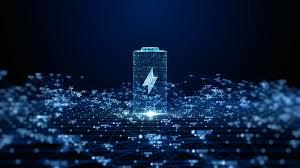Lithium-Ion Battery Cathode Market Pain Points Hindering Sustainable Growth Path
The lithium-ion battery cathode market is a cornerstone of the energy storage revolution, enabling the rise of electric vehicles (EVs), renewable energy systems, and portable electronics. However, despite strong demand and optimistic growth projections, the market faces several pain points that threaten to undermine its scalability and sustainability. From material sourcing challenges and high costs to technological complexity and environmental impact, cathode manufacturers and downstream stakeholders must navigate a complex web of obstacles. Addressing these issues is critical to securing the future of clean energy solutions powered by lithium-ion batteries.

High Material Costs and Price Volatility
One of the most pressing pain points in the cathode market is the high and volatile cost of key raw materials, particularly cobalt, nickel, and lithium. These elements are essential to commonly used cathode chemistries like NMC (nickel-manganese-cobalt) and NCA (nickel-cobalt-aluminum). Fluctuations in global supply and geopolitical instability have led to unpredictable price movements, significantly impacting production costs and financial planning for manufacturers.
Cobalt prices, in particular, are prone to spikes due to limited sources of supply and political instability in countries like the Democratic Republic of Congo, which dominates global production. As demand continues to surge, price volatility could increase, posing long-term cost challenges across the battery value chain.
Ethical and Environmental Concerns in Material Sourcing
The mining of critical cathode materials presents serious ethical and environmental concerns. Cobalt mining, for instance, has been linked to unsafe labor practices, including child labor, and causes significant environmental degradation. Similarly, lithium extraction in arid regions depletes water resources and disrupts local ecosystems.
These issues have led to mounting pressure on battery manufacturers and automotive brands to ensure transparent and responsible sourcing. However, building an ethical supply chain is difficult due to the fragmented nature of global mining operations and the limited availability of certified, conflict-free materials.
Complex and Rigid Supply Chains
The global lithium-ion battery supply chain is highly concentrated and vulnerable to disruption. A significant portion of the world's cathode materials is processed in China, creating a single point of failure for many downstream manufacturers. Disruptions such as trade conflicts, export restrictions, or natural disasters can have cascading effects on the entire supply chain.
In addition, many regions lack the infrastructure or expertise to process raw materials or manufacture cathode components, making it difficult for companies to diversify their operations. This dependency not only increases risks but also stifles innovation and resilience within the market.
Technological Limitations and Performance Trade-offs
Despite the progress made in cathode chemistry, current technologies still face limitations in terms of energy density, charging speed, thermal stability, and degradation. While high-nickel cathodes offer greater energy storage, they are more prone to overheating and faster degradation, making them less suitable for certain applications without additional safeguards.
At the same time, LFP (lithium iron phosphate) cathodes, known for safety and longevity, have lower energy density and are less suited for high-performance EVs. These trade-offs force manufacturers to make difficult choices based on application, cost, and safety—limiting universal scalability of any one solution.
Slow Progress in Recycling and Circular Economy Integration
Battery recycling is often viewed as a solution to material shortages and environmental concerns. However, the recycling infrastructure for lithium-ion batteries, especially for cathode materials, remains underdeveloped. Current recycling technologies are not yet widely commercialized, and material recovery rates are often insufficient or inconsistent.
Moreover, logistical challenges—such as collecting and transporting used batteries safely—further hinder large-scale recycling efforts. Without significant investment and regulatory support, recycling is unlikely to become a fully integrated part of the cathode supply chain in the near term.
Regulatory and Policy Uncertainty
While government incentives have accelerated EV and battery adoption, regulatory environments vary significantly across regions. A lack of harmonized policies on recycling mandates, emissions standards, and material traceability creates uncertainty for manufacturers operating in multiple markets.
Additionally, changing trade policies, import/export tariffs, and environmental regulations can quickly alter the economics of cathode production. For companies planning long-term investments in R&D or new manufacturing facilities, this uncertainty poses a major hurdle to strategic decision-making.
Barriers to Innovation and Commercialization
New cathode chemistries, such as cobalt-free or solid-state-compatible materials, are under active development. However, the path from lab-scale innovation to commercial-scale production is long and costly. Challenges include securing pilot-scale manufacturing, validating long-term safety, and adapting existing infrastructure.
Many promising technologies struggle to obtain the capital or industrial support needed to bridge this gap. As a result, the market remains reliant on older, established chemistries despite growing interest in alternatives.
Conclusion
The lithium-ion battery cathode market holds immense potential, but a range of pain points must be addressed for it to achieve sustainable and widespread adoption. High costs, ethical concerns, supply chain fragility, technological limitations, and regulatory uncertainty all pose formidable challenges. To overcome these issues, industry stakeholders must collaborate on innovation, standardization, and responsible sourcing. Only by proactively addressing these barriers can the cathode market fulfill its role in powering a cleaner and more electrified future.
- Art
- Causes
- Crafts
- Dance
- Drinks
- Film
- Fitness
- Food
- Jogos
- Gardening
- Health
- Início
- Literature
- Music
- Networking
- Outro
- Party
- Religion
- Shopping
- Sports
- Theater
- Wellness


